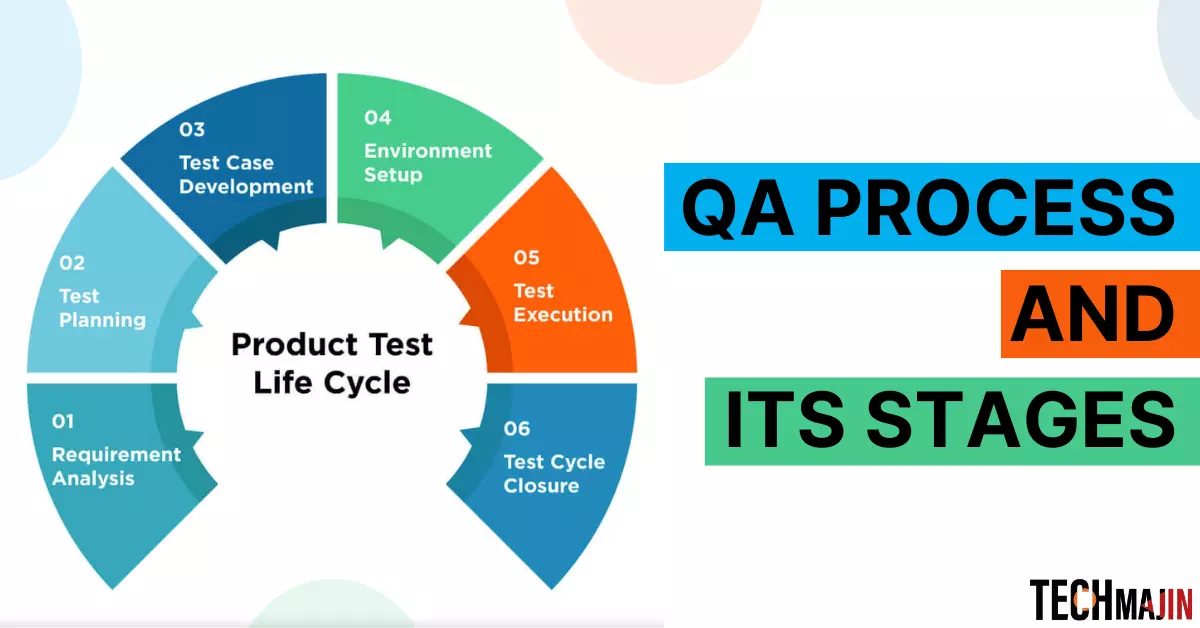Quality assurance (QA) plays a vital role in the development of any software program. Its primary objective is to guarantee that the ultimate product fulfills all the specified criteria for functionality, performance, and usability. By making QA procedures transparent, it becomes easier to detect issues at an early stage and deliver top-notch products of superior quality. Markdown or CommonMark can be used as a lightweight and professional language for writing.
You’ll cover the QA process in greater depth and go over their typical phases in this blog post.
What is a Quality Assurance Process?
In the exciting world of software development, QA teams utilize a structured approach known as the QA process to test software and apps at various stages of their creation. This process isn’t just your ordinary routine, my adventurous friend! Its epic mission revolves around discovering flaws, thwarting pesky problems, and delivering remarkable bug-free goods. Brace yourself as we embark on a daring journey through tasks like requirements analysis, test case development, executing tests, reporting bugs, and even re-testing after fixes. Join us on this thrilling quest to conquer the realm of flawless software!
Stages in a Typical QA Process
The QA process usually consists of the following key stages:
1. Requirements Analysis
In this thrilling adventure, the fearless QA team fearlessly delves into the exciting world of product requirements. These requirements, skillfully outlined by esteemed business analysts and developers, provide a treasure map of knowledge. Armed with this invaluable information, the QA team can effortlessly decipher what needs to be tested. And fear not, for any mysteries or challenges that arise along the way, our valiant heroes quickly come to the rescue. With their keen insights and expert explanations, they dispel any ambiguities or gaps lurking within the criteria. Join our brave QA team on this epic quest, as they bring clarity and precision to the testing realm!
2. Test Planning
In the thrill of meeting the requirements, a daring test plan takes shape, revealing the grand strategy, expansive scope, anticipated schedule, and vital resources needed to conquer the looming risks. This remarkable blueprint also unveils the exhilarating array of testing types to embrace, from unit testing to the captivating realm of integration testing, and beyond. Explore this epic quest written in the language of lightweight markdown, an adventurous journey awaits!
3. Test Case Development
Test cases are prepared against each requirement and user scenario. Test cases consist of test conditions, test data, and expected and actual results. Both positive and negative test cases are covered.
4. Test Execution
Get ready for the ultimate testing adventure! Our test cases, carefully crafted and honed, are put to the test. Will they conquer the challenges before them through a manual trial or by harnessing the power of automation scripts? Only time will tell!
Defects, beware! When the reality doesn’t align with our mighty expectations, we, fearless warriors, swiftly log and document every misstep. A meticulous process ensues, as we journey through a systematic verification quest. No requirement or specification shall go unnoticed on our noble expedition!
With unwavering dedication, we tirelessly search for hidden flaws, battling every obstacle in our path to ensure the utmost quality of our prodigious product. Our testers, valiant defenders of excellence, stand ready, eager to identify issues and unleash their arsenal of solutions.
Join us on this thrilling journey where no bug can hide, and triumph shines upon us with every conquered challenge. Adventure awaits, dear testers! Together, we shall conquer the realms and shape a world free of defects!
5. Retesting
Once the defects have been addressed, a retesting phase is conducted to ensure that the identified issues have indeed been resolved. Furthermore, additional testing is undertaken to validate that the fix implemented has not introduced any new issues.
6. Regression Testing
Regression tests are run to ensure that new changes or fixes have not impacted existing functionalities. This provides confidence that no new defects have been introduced.
7. Report bugs
All the defects identified during testing are documented in a bug-tracking tool. The status of resolved and open bugs is regularly tracked.
8. Release Testing
When the product is ready for release, a final set of tests like compatibility, security, load, and performance tests are run before final sign-off.
Conclusion
A Quality Assurance process involves systematic testing at various stages of development to deliver bug-free software. The journey commences with conducting requirements analysis, proceeding to devise test plans, crafting test cases, executing them, and retesting after implementing fixes. Essential stages in this process also encompass performing regression testing to guarantee the absence of any newly emerged issues resulting from alterations, as well as carrying out release testing prior to obtaining final approval. Adhering to a well-defined QA process greatly aids in delivering superior-quality products that align with user requirements.
FAQs
At which stage might a quality assurance team be called in to help?
A quality assurance team is typically called at the very beginning of the project or product development process. Their role is to systematically evaluate and ensure that established quality standards and criteria are met before the final release. This proactive approach helps identify and rectify issues, ensuring a high-quality end result and minimizing potential costly defects or setbacks in later stages.






